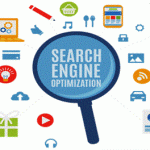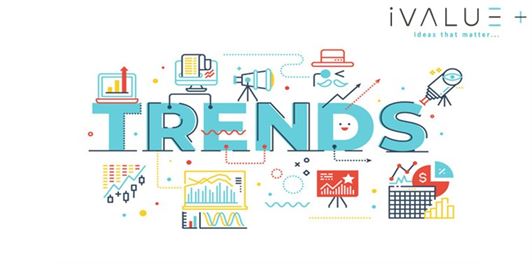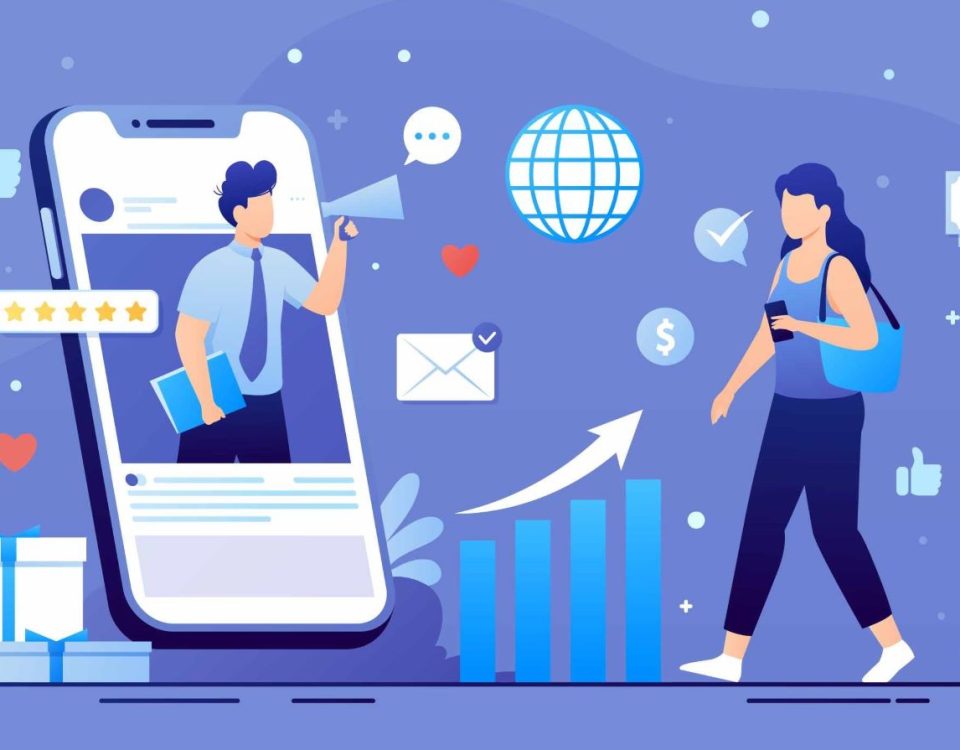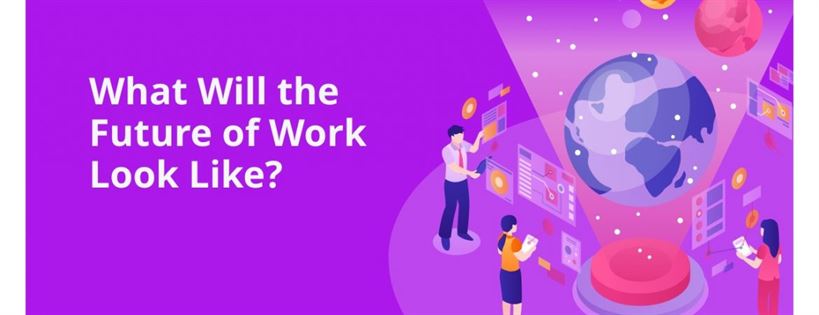
Office work will never be the same
March 3, 2021
How Right Coding Can Help Your Site with SEO!
March 17, 2021Technology Trend 2021
From the mass adoption of telehealth to the remote workforce, technology has moved front and center as every industry grapple with the effects and fallout of the Covid-19 pandemic. 2021 will be a crucial year for the refinement and retooling of technologies, especially those that took the spotlight during the year of social distancing and lockdowns.
Embracing a new mindset to shape a better future
After the huge disruptions caused by the COVID-19 crisis in 2020, companies are looking to get back on course and, importantly, build for the future.
The past year has poked holes in long-standing norms about how companies operate and how people live. Companies looked at their operations and saw fragile supply chains, untrustworthy information and radically new customer needs. As they’ve adjusted to these realities, the most successful ones have become Masters of Change.
While it will be tempting for companies to retreat to what they know, 2020 brought the need for a different path to light. If businesses continue to have a clear-eyed perspective and sharp focus on their expedited digital transformations, they can emerge as Masters of Change and the new leaders.
It’s become clear that there is no leadership without technology leadership. The recent rapid digital acceleration has placed technology as the cornerstone of global leadership.
This year’s trends fall under three themes: People centricity, location independence and resilient delivery.
People centricity: Although the pandemic changed how many people work and interact with organizations, people are still at the center of all business. And they need digitaliized processes to function in today’s environment.
Location independence: COVID-19 has shifted where employees, customers, suppliers, and organizational ecosystems physically exist. Location independence requires a technology shift to support this new version of the business.
Resilient delivery: Whether a pandemic or a recession, volatility exists in the world. Organizations that are prepared to pivot and adapt will weather all types of disruptions.
Trend 1: Internet of Behaviors
As demonstrated by the COVID-19 protocol monitoring example, the IoB is about using data to change behaviors. With an increase in technologies that gather the “digital dust” of daily life — data that spans the digital and physical worlds — that information can be used to influence behaviors through feedback loops. For example, for commercial vehicles, telematics can monitor driving behaviors, from sudden braking to aggressive turns. Companies can then use that data to improve driver performance, routing and safety.
“IoB does have ethical and societal implications depending on the goals and outcomes of individual uses ”
IoB does have ethical and societal implications depending on the goals and outcomes of individual uses. The same wearables that health insurance companies use to track physical activities to reduce premiums could also be used to monitor grocery purchases; too many unhealthy items could increase premiums. Privacy laws, which vary from region to region, will greatly impact the adoption and scale of the IoB.
Trend 2: Total experience
Total-experience combines multi-experience, customer experience, employee experience, and user experience to transform the business outcome. The goal is to improve the overall experience where all of these pieces intersect, from technology to employees to customers and users. For example, one telecommunications company transformed its entire customer experience in an effort to improve safety and satisfaction. First, it deployed an appointment system via an existing app. When customers arrived for their appointment and came within 75 feet of the store, they received two things: 1) A notification to guide them through the check-in process and 2) an alert letting them know how long it would be before they could safely enter the store and maintain social distance.
Trend 3: Privacy-enhancing computation
Privacy-enhancing computation features three technologies that protect data while it’s being used. The first provides a trusted environment in which sensitive data can be processed or analyzed. The second performs processing and analytics in a decentralized manner. The third encrypts data and algorithms before processing or analytics. This trend enables organizations to collaborate on research securely across regions and with competitors without sacrificing confidentiality. This approach is designed specifically for the increasing need to share data while maintaining privacy or security.
Trend 4: Distributed cloud
Distributed cloud is where cloud services are distributed to different physical locations, but the operation, governance and evolution remain the responsibility of the public cloud provider.
“Distributed cloud is the future of cloud”
Enabling organizations to have these services physically closer helps with low-latency scenarios, reduces data costs and helps accommodate laws that dictate data must remain in a specific geographical area. However, it also means that organizations still benefit from public cloud and aren’t managing their own private cloud, which can be costly and complex. Distributed cloud is the future of the cloud.
Trend 5: Anywhere operations
An anywhere operations model will be vital for businesses to emerge successfully from COVID-19. At its core, this operating model allows for business to be accessed, delivered and enabled anywhere — where customers, employers and business partners operate in physically remote environments. The model for anywhere operations is “digital first, remote first;” for example, banks that are mobile-only, but handle everything from transferring funds to opening accounts with no physical interaction. Digital should be the default at all times. That’s not to say physical space doesn’t have its place, but it should be digitally enhanced, for example, contactless check-out at a physical store, regardless of whether its physical or digital capabilities should be seamlessly delivered.
Trend 6: Cybersecurity mesh
Cybersecurity mesh is a distributed architectural approach to scalable, flexible and reliable cybersecurity control. Many assets now exist outside of the traditional security perimeter. Cybersecurity mesh essentially allows for the security perimeter to be defined around the identity of a person or thing. It enables a more modular, responsive security approach by centralizing policy orchestration and distributing policy enforcement. As perimeter protection becomes less meaningful, the security approach of a “walled city” must evolve to current needs.
Trend 7: Intelligent composable business
An intelligent composable business is one that can adapt and fundamentally rearrange itself based on a current situation. As organizations accelerate digital business strategy to drive faster digital transformation, they need to be agile and make quick business decisions informed by currently available data. To successfully do this, organizations must enable better access to information, augment that information with better insight and have the ability to respond quickly to the implications of that insight. This will also include increasing autonomy and democratization across the organization, enabling parts of the businesses to quickly react instead of being bogged down by inefficient processes.
Trend 8: AI engineering
A robust AI engineering strategy will facilitate the performance, scalability, interpretability and reliability of AI models while delivering the full value of AI investments. AI projects often face issues with maintainability, scalability and governance, which makes them a challenge for most organizations. AI engineering offers a pathway, making AI a part of the mainstream DevOps process rather than a set of specialized and isolated projects. It brings together various disciplines to tame the AI hype while providing a clearer path to value when operationalizing the combination of multiple AI techniques. Due to the governance aspect of AI engineering, responsible AI is emerging to deal with trust, transparency, ethics, fairness, interpretability and compliance issues. It is the operationalization of AI accountability.
Trend 9: Hyperautomation
Hyperautomation is the idea that anything that can be automated in an organization should be automated. Hyperautomation is driven by organizations having legacy business processes that are not streamlined, creating immensely expensive and extensive issues for organizations. Many organizations are supported by a “patchwork” of technologies that are not lean, optimized, connected, clean or explicit. At the same time, the acceleration of digital business requires efficiency, speed, and democratization. Organizations that don’t focus on efficiency, efficacy, and business agility will be left behind.
Trend 10: In HR, cognitive science and gamification win the war for talent
By 2025, millennials will account for three-quarters of the global workforce. As organizations increasingly work with a digital-native pool of candidates, they must modernize recruitment. Using technology to develop an innovative recruiting process can improve HR teams’ performance and enable faster identification of the most promising candidates, while meeting the expectations of a new generation of talent.
This can look quite different from traditional recruiting processes. Toshiba, for instance, offers a next-generation hiring solution that automates candidate screening without relying on résumés. Leveraging expertise in cognitive science and gamification to create mini-games for smartphones, tablets and computers, the start-up’s technology evaluates experience, technical expertise, intellectual skills, soft skills, cultural fit and multiple other factors in a smooth and engaging candidate experience. The matching scores the software generates quickly identify top candidates to interview, improving HR productivity. It also fosters objectivity and diversity by limiting selection bias based on age, race or other factors.
References:
https://www.accenture.com/in-en/insights/technology/technology-trends-2021
https://www.gartner.com/smarterwithgartner/gartner-top-strategic-technology-trends-for-2021/
https://www.bain.com/insights/ten-technology-trends-moving-into-2021/








